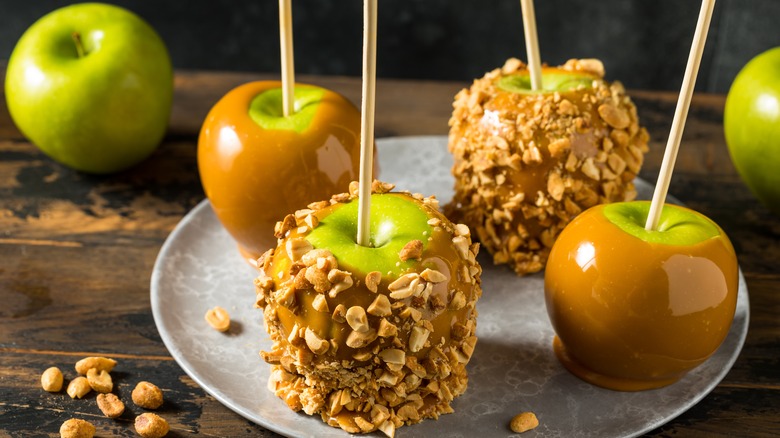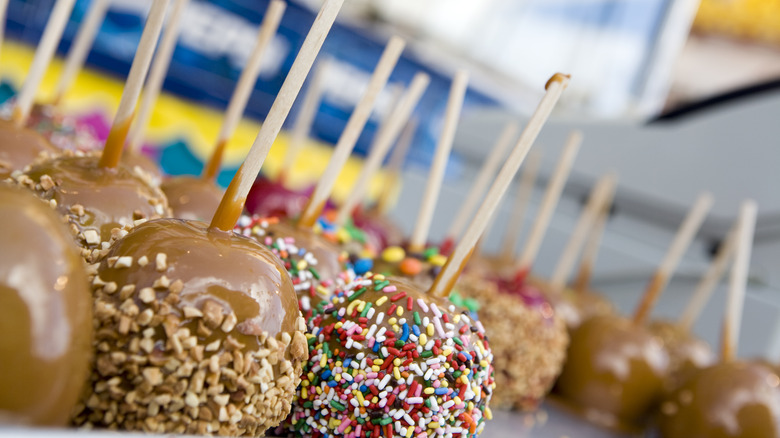How To Store Caramel Apples Like A Pro
Autumn's cooler temps welcome new recipes and flavors into our kitchens. As we transition from tank tops to chunky sweaters, the season's star produce, apples, make their way into our beverages, baked goods, entrees, salads, and desserts; and we couldn't be happier.
Apple season is from the end of July to the beginning of November, getting families outdoors to the orchards to pick their favorite varieties. With bushels of crisp Granny Smith, Gala, and Golden Delicious, home cooks are pulling out their apple recipes, which means lots of apple pie baking, apple sauce making, cider drinking, and, if you've got a sweet tooth, caramel apple eating.
Coated in melted caramel and rolled in crunchy toppings like nuts, sprinkles, and crushed candies, caramel apples are found in grocery and specialty stores everywhere this time of year. Whether you purchase a giant caramel apple (which should feed a family of four) or make mini ones at home, it's essential to store caramel apples properly.
When purchasing prepackaged caramel apples, avoid products that are stored on shelves at room temperature. They may look tempting displayed near the checkout, but unrefrigerated caramel apples can cause food-borne illnesses (via PennState). Similarly, homemade caramel apples should be kept in the refrigerator.
Why store caramel apples in the refrigerator?
According to Luke LaBorde, a food scientist from the Department of Food Science at Penn State, "Under no circumstances should consumers eat caramel-covered apples that have not been kept stored at refrigerated temperatures. Doing so can place one at risk for serious health issues."
In 2014, there was a recall for commercially manufactured caramel apples packaged by Bidart Bros., causing an outbreak of the food-borne illness Listeria that affected 35 people in 12 states and was directly responsible for three deaths. Improperly washed apples were used to make the treat, containing harmful bacteria commonly found on the exterior. When the sticks were inserted, the bacteria were introduced into the fruit's flesh — where they can multiply with surprising rapidity (per the Centers for Disease Control).
When just a few Listeria cells are left on the apple's surface (usually harmless), an apple becomes a breeding ground for the germ just below the skin once it's coated in caramel. The sealed, sugary environment, when kept at room temperature or above 40 degrees Fahrenheit, known as the "Danger Zone," accelerates bacteria growth, leading to digestive issues or even hospitalization for adults over 65, those with a weakened immune system, and pregnant people.
To be safe, only purchase refrigerated caramel apples and place homemade caramel apples in an airtight container in the refrigerator if not eaten within two hours. If you want to prevent them from sticking together, use some wax paper to separate each candy apple.


